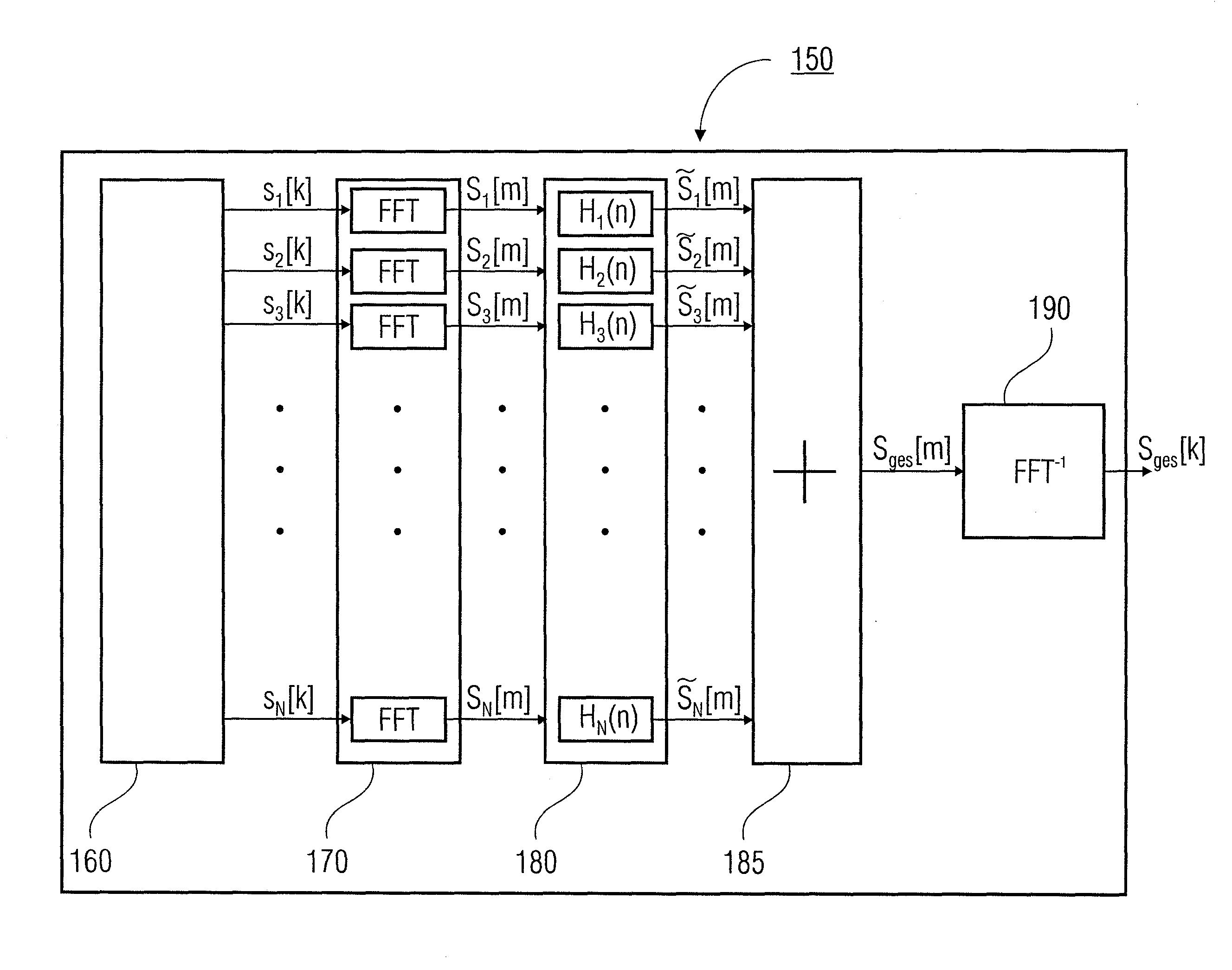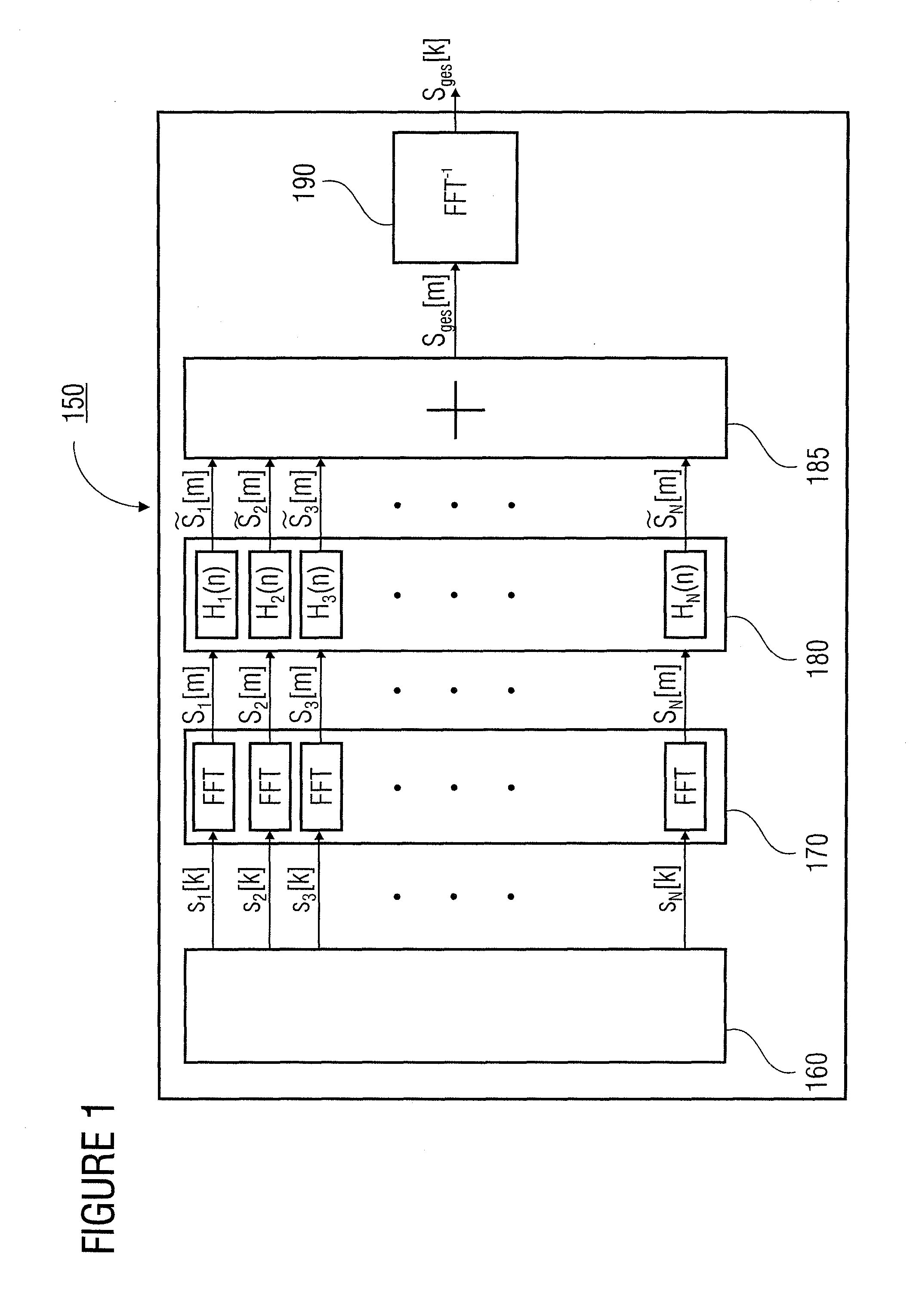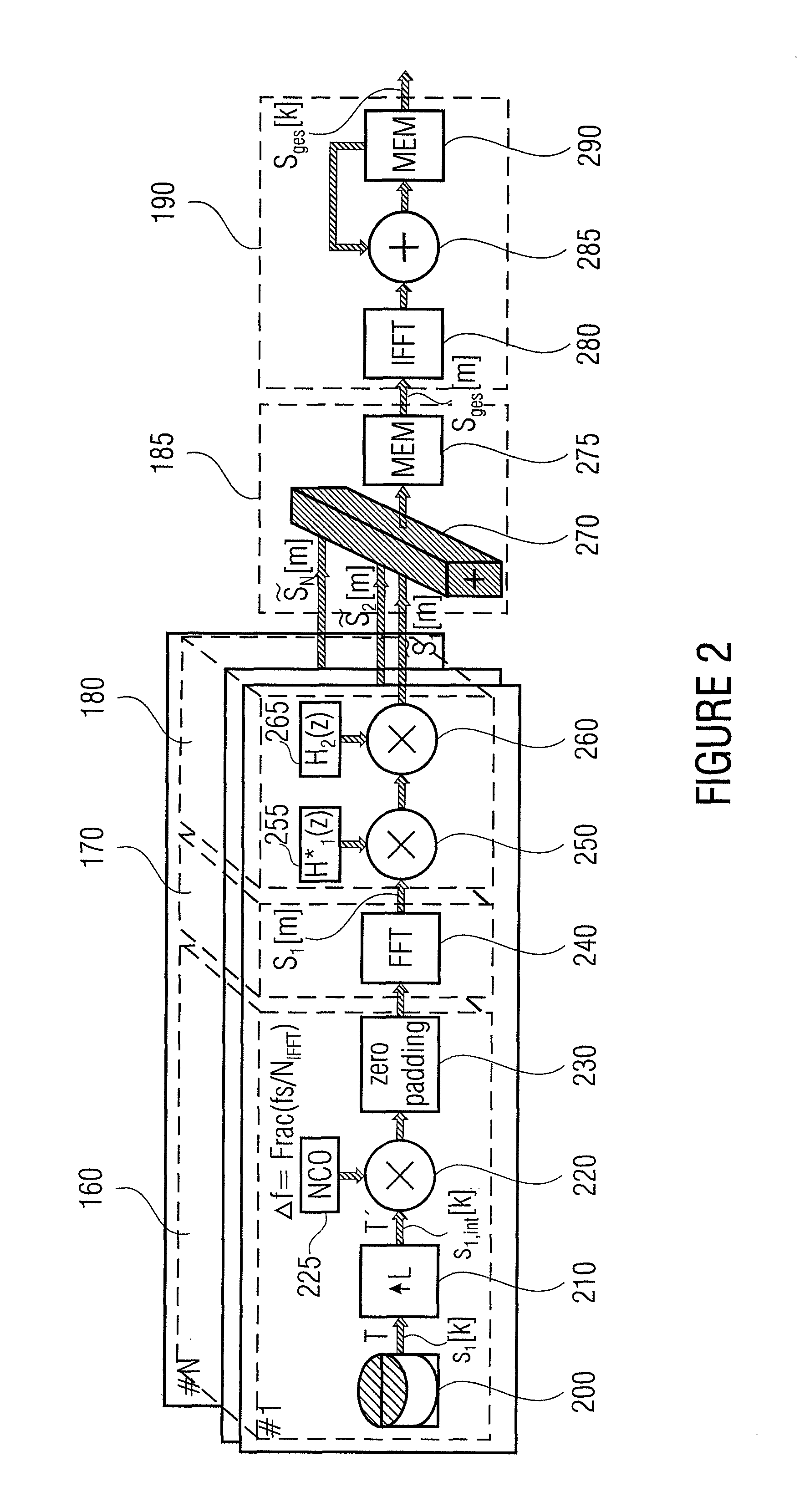Concept for Realistic Simulation of a Frequency Spectrum
- Summary
- Abstract
- Description
- Claims
- Application Information
AI Technical Summary
Benefits of technology
Problems solved by technology
Method used
Image
Examples
Embodiment Construction
[0026]With regard to the following description, it should be noted that similar or equal functional elements have the same reference numbers in the different embodiments and thus the description of these functional elements can be interchanged in the different embodiments presented below.
[0027]FIG. 1 shows a block diagram of an apparatus for simulating a signal composed of a plurality of individual signals from respective signal locations at a simulation location according to an embodiment of the present invention.
[0028]The apparatus 150 comprises a means for providing the plurality of time-discrete baseband individual signals s1[k] to sN[k] in the time domain, a means 170 for transforming the time-discrete individual signals s1[k] to sN[k] to a frequency-discrete baseband frequency domain, a means 180 for processing the individual signals s1[m] to sN[m] transformed to the baseband frequency domain, a means 185 for combining the processed individual signals {tilde over (S)}1[m] to {...
PUM
 Login to View More
Login to View More Abstract
Description
Claims
Application Information
 Login to View More
Login to View More - R&D
- Intellectual Property
- Life Sciences
- Materials
- Tech Scout
- Unparalleled Data Quality
- Higher Quality Content
- 60% Fewer Hallucinations
Browse by: Latest US Patents, China's latest patents, Technical Efficacy Thesaurus, Application Domain, Technology Topic, Popular Technical Reports.
© 2025 PatSnap. All rights reserved.Legal|Privacy policy|Modern Slavery Act Transparency Statement|Sitemap|About US| Contact US: help@patsnap.com



